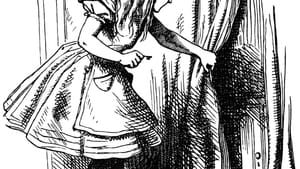Stay in the Loop
BSR publishes on a weekly schedule, with an email newsletter every Wednesday and Thursday morning. There’s no paywall, and subscribing is always free.
Alice at 150: From spur-of-the-moment story to literary institution
Down the Rabbit Hole at the Rosenbach

Before Harry came Alice, who fell into Wonderland and transfixed generations of young (and not-so-young) readers. The Rosenbach of the Free Library of Philadelphia marks the 150th anniversary of the publication of Alice’s Adventures in Wonderland with Down the Rabbit Hole, the centerpiece exhibit of a library-wide menu of talks, screenings, and tea parties that continues into next spring.
The Rosenbach delves into the book’s origin and its influence on how society viewed childhood and children’s literature. It introduces the polymath author, an Oxford lecturer who wrote as Lewis Carroll to separate his literary and academic lives. And it tells the tale of the original manuscript, which was twice purchased by book dealer and museum namesake Dr. A.S.W. Rosenbach.
Charles Lutwidge Dodgson (1832-1898) invented the story to divert the three Liddell sisters, who lived nearby, adding installments as the trio pleaded with him to keep the story going. Dodgson came naturally to the task of amusing children — the third of 11 offspring, he never lost the sense of childlike whimsy, invention, and creativity.
Hidden meanings, rewritten rules
Dodgson’s love of codes, double meanings, puzzles, riddles, and games unfurls across three galleries in Down the Rabbit Hole. Normal rules do not apply in the world he created, as Alice is left to find her way in a strange land where inhabitants conduct twisted conversations, appearing and disappearing without warning, all while she is being transformed in a blink, repeatedly shrinking and growing, never fitting her surroundings.
The sequel, Through the Looking Glass, written years later, continues the theme within the structure of a chess match. An older, more poised Alice and everyone she meets mirror the qualities of game pieces, and the action follows movement on a chessboard. One of the Rosenbach galleries is set up as a game room in which visitors can play Lanrick, Dodgson’s variation on chess, as well as his version of billiards, played on a circular table. Or they can try writing backward, another of the author’s playful habits.
The original girl and the original manuscript
Dodgson based his precocious central character on seven-and-a-half-year-old Alice Liddell, and it was she who asked him to write down the story. He presented the handwritten manuscript, originally titled Alice’s Adventures Under Ground, to Alice as a Christmas present in 1864.
Later, Dodgson was persuaded to publish his story. He retained tight control over the process of bringing the work to print, negotiating with publishers and selecting illustrator Sir John Tenniel of Punch magazine to create the iconic drawings that are as integral to readers’ experience of Wonderland as Dodgson’s text.
In 1928 Philadelphia book dealer Dr. A.S.W. Rosenbach purchased the manuscript, which 76-year-old Alice Liddell Hargreaves had submitted for auction in England. Outbidding the esteemed British Museum, he paid about $75,000 and raised the ire of the British, who considered the classic book a national treasure. Sensitive to the situation, Rosenbach offered to sell the manuscript to the museum at cost, but funds could not be raised. The manuscript made it to the British Museum in 1945, with the assistance of Rosenbach.
Morals and meanings
The exhibit examines the influence Alice has had on literature, psychology, and popular culture. The book has been studied for decades in literature classes by undergraduates searching for secret messages and teasing out hidden symbols and meanings in the book’s creatures, settings, events, and doublespeak. Dodgson could not help but be gratified by this.
Unlike most stories for children up to that time, Alice’s Adventures in Wonderland lacks an explicit moral. Created for fun, it broadened ideas of what children’s literature could be and contributed to society’s recognition of childhood as a distinct stage of life populated not by miniature adults, but by beings whose development was nourished by play and pretend.
Dodgson’s gift was that he could function in the adult world without surrendering the magic and mystification, the deep and fleeting emotions, the confusion and wonder of being a child.
Editor's note: The British Library, which has held the manuscript since 1948, has made if available on their website, here. They note: "This edition is unique in that it was created by Charles Dodgson (pen name Lewis Carroll) as a gift for Alice Liddell in 1864 rather than for publication, which he adapted it for a year later."
What, When, Where
Down the Rabbit Hole: Celebrating 150 Years of Alice in Wonderland. Through May 15, 2016 at the Rosenbach, 2008-2010 Delancey Place, Philadelphia. 215-732-1600 or rosenbach.org.
Sign up for our newsletter
All of the week's new articles, all in one place. Sign up for the free weekly BSR newsletters, and don't miss a conversation.